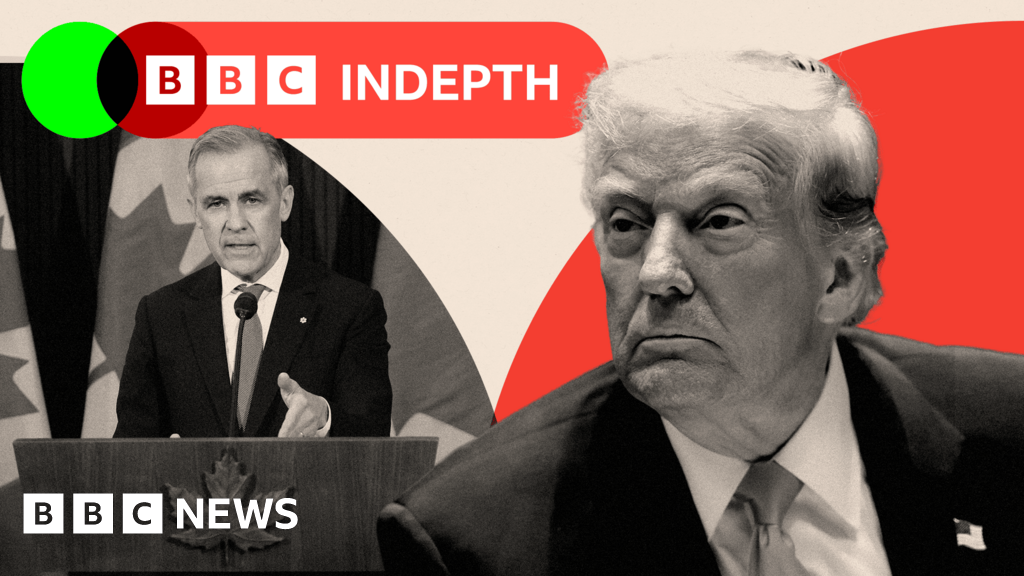Key Takeaways
- Quantitative easing (QE) and quantitative tightening (QT) significantly influence crypto market liquidity and investor sentiment.
- Central banks’ policy decisions can trigger bull or bear trends in major cryptocurrencies like Bitcoin and Ethereum.
- The Federal Reserve’s shift in 2025 toward reduced QT has impacted crypto recovery signals.
- Monitoring macroeconomic signals is essential for crypto investors navigating volatile markets.
The cryptocurrency market, once operating on the fringes of the global financial system, is now deeply entangled with macroeconomic trends and central bank policies.
One of the most significant influences in recent years has been the monetary mechanisms of quantitative easing (QE) and quantitative tightening (QT). These tools, used by central banks to manage economic cycles, directly affect liquidity, risk appetite, and investor behavior—all critical to digital asset valuations.
As of April 2025, both QE and QT are in the spotlight again. The U.S. Federal Reserve’s recent move to slow QT has sparked renewed optimism in the crypto space. This article explores what QE and QT are, how they interact with the crypto market, and what investors should keep in mind moving forward.
What Is Quantitative Easing (QE)?
Quantitative easing is a monetary policy tool where central banks purchase government bonds and other financial assets to inject liquidity into the economy. QE is usually deployed in times of economic slowdown or recession to encourage lending, boost asset prices, and stimulate growth.
- How it works: Central banks create digital money to buy securities, increasing cash in the system.
- Impact: Lower interest rates, increased borrowing, rising asset prices, and more speculative investment.
Historically, QE has been associated with asset bubbles in stocks, real estate, and risk-on investments like cryptocurrencies.
What Is Quantitative Tightening (QT)?
Quantitative tightening is essentially the reverse of QE. It involves central banks selling assets or letting them mature without reinvesting, thereby removing liquidity from the financial system. QT is used to control inflation and cool down overheated economies.
- How it works: Central banks shrink their balance sheets, reducing available capital.
- Impact: Higher interest rates, lower borrowing, declining asset prices, and risk-off sentiment.
QT typically causes investors to retreat to “safe-haven” assets like U.S. Treasuries, pulling capital away from volatile sectors like crypto.
What’s the Relationship Between QE/QT and Crypto
Cryptocurrencies are uniquely sensitive to liquidity conditions. As decentralized assets with no earnings or cash flow, their valuation is largely sentiment-driven and tied to broader macroeconomic risk tolerance.
Quantitative Easing & Crypto
When central banks implement quantitative easing, they increase the money supply by purchasing government bonds or other financial assets. This increase in liquidity generally boosts market sentiment as more money becomes available for investment.
In the crypto context, this often results in a higher risk appetite, with investors seeking higher returns in volatile markets. The effect is typically bullish for crypto markets, leading to price rallies as demand for digital assets increases due to the availability of more capital.
Quantitative Tightening & Crypto
On the other hand, quantitative tightening occurs when central banks reduce the money supply, usually by selling off assets or allowing them to mature without replacement. This contraction in liquidity tends to reduce market optimism and investor risk appetite, as less capital is available for investments.
This often translates to a bearish outlook for the crypto market, with lower prices as demand for assets wanes due to tighter financial conditions. In essence, when liquidity is tightened, it typically leads to price drops in cryptocurrencies as investors become more cautious in the face of restricted monetary flow.
How Quantitative Easing and Tightening Affect Cryptocurrency Markets
Quantitative easing boosts liquidity and investor risk appetite, driving bullish trends in cryptocurrency, while quantitative tightening reduces liquidity and risk appetite, leading to bearish market conditions.
Here’s how QE and QT impact crypto markets:
1. Liquidity and Risk Appetite
Cryptocurrencies thrive in high-liquidity environments. QE expands liquidity, making investors more willing to allocate capital to speculative assets like Bitcoin and Ethereum. On the other hand, QT shrinks liquidity, reducing risk tolerance.
- Example: During the 2020-2021 QE-driven market, Bitcoin surged from ~$7,000 to over $60,000.
- Contrast: The QT phase starting in 2022 saw crypto prices drop sharply, with Bitcoin losing over 60% of its value.
2. Correlation with Interest Rates
While not directly pegged, crypto markets react to interest rate expectations. QE typically leads to lower rates, boosting risk assets. QT often coincides with rate hikes, making fixed-income assets more attractive than volatile tokens.
3. Investor Sentiment and Volatility
Macro policies heavily shape market psychology. Announcements of QE often fuel bullish sentiment, while QT generates fear of recession or liquidity crunches—increasing crypto volatility.
April 2025 Update: Fed Eases QT
In March 2025, the U.S. Federal Reserve announced a reduction in its quantitative tightening pace from $25 billion to $5 billion per month, a significant pivot.
Why It Matters
- This move suggests the Fed is wary of tightening too quickly amidst fragile economic recovery.
- Crypto markets responded with a rebound, led by Bitcoin reclaiming the $83,000 level after a short dip.
Real-World Implications of Quantitative Easing and Tightening for Crypto Investors
For crypto investors, understanding how these policies influence market liquidity and risk appetite is crucial, as both QE and QT can significantly impact digital asset prices.
- Entry and exit timing: Understanding the QE/QT cycle helps investors time their crypto trades. Accumulating during QT bottoms and riding QE-induced rallies can be a strategic move.
- Stablecoins and yield hunting: In QT phases, stablecoins often see inflows as traders seek safety. During QE, high-yield DeFi products attract more attention.
- Altcoin seasonality: QE tends to lift all crypto boats, with altcoins outperforming during bullish liquidity cycles. QT often consolidates its strength into Bitcoin and top assets.
- Institutional involvement: Large firms like BlackRock and Fidelity adjust their crypto exposure based on macro policy. Their behavior amplifies QE/QT impacts.
Global Context: Not Just a US Phenomenon
While the U.S. Fed plays the most prominent role, other central banks are also in motion:
- European Central Bank (ECB): Maintaining tight policy due to persistent inflation.
- Bank of Japan (BoJ): Still in QE mode , indirectly supporting crypto liquidity through global capital flows.
The interplay between these institutions creates a complex macro backdrop for global crypto markets.
Challenges and Criticisms of QE & QT in Crypto Markets
While QE and QT significantly influence cryptocurrency markets, these monetary policies are not without challenges and criticisms—particularly from within the crypto ecosystem. Here’s a breakdown of the key concerns:
1. QE Can Inflate Bubbles in Crypto Markets
Quantitative Easing injects massive liquidity into the economy, which often flows into high-risk assets—including cryptocurrencies. This can fuel unsustainable price rallies and speculative bubbles.
During the COVID-era QE (2020–2021), Bitcoin surged from ~$7,000 to over $60,000, and altcoins like Dogecoin rose over 10,000%, fueled more by hype and liquidity than fundamentals. Many retail investors bought near the top and suffered losses when the bubble burst in 2022.
2. QT Triggers Volatility and “Risk-Off” Cascades
When central banks initiate QT and liquidity dries up, the withdrawal often triggers a “risk-off” sentiment—where investors exit speculative positions, including crypto, en masse.
In mid-2022, as the U.S. Federal Reserve raised rates and began QT, Bitcoin dropped from ~$40,000 to under $20,000 within months. Ethereum and other altcoins saw even larger percentage losses, mirroring investor panic from traditional markets.
3. Short-Termism and Fed Dependency
The crypto market has become highly reactive to central bank policy, often moving sharply on Fed announcements—even if fundamentals remain unchanged. This has led to short-term speculation dominating over long-term development.
In March 2025, Bitcoin jumped nearly 6% in a single day after the Fed announced a slowdown in QT —even though there was no direct change in crypto policy or network development.
4. QE Fuels Institutional Centralization
Large-scale QE often benefits institutions and hedge funds with easier access to capital, potentially leading to centralized control over decentralized assets.
BlackRock, Fidelity, and other asset managers have increased their crypto holdings dramatically during QE periods. For instance, BlackRock’s Bitcoin ETF became the largest single holder of BTC, raising concerns about centralization of ownership in a network designed to be decentralized.
5. Crypto as Collateral in a Fragile Liquidity System
Crypto is increasingly used as collateral in lending and DeFi protocols, and liquidity conditions deeply influence its value. During QT, falling prices can trigger liquidations, causing cascading effects across the ecosystem.
During the 2022 bear market, protocols like Celsius, Voyager, and Terra’s Anchor experienced massive insolvency and user losses—partly due to falling crypto prices in a tightening liquidity environment.
Similar risks could re-emerge in 2025 if liquidity tightens too fast while over-leveraged positions remain prevalent in DeFi.
Looking Ahead: What to Watch in 2025
If QE Returns
- Increased appetite for BTC, ETH, and high-cap altcoins.
- Renewed interest in riskier crypto sectors like NFTs, DeFi, and gaming tokens.
- Institutional inflows into tokenized assets, real-world assets (RWA), and stablecoins.
If QT Continues
- Reduced retail and institutional risk appetite.
- Liquidity drying up on DEXs and DeFi protocols.
- Increased volatility, with downside risk in altcoins.
Conclusion
QE and QT are no longer just tools of traditional finance; they are now central to the dynamics of the crypto market. As we navigate through 2025, shifts in these monetary policies will likely dictate the pace and direction of digital asset growth.
For anyone investing in crypto, tracking central bank balance sheets and policy shifts is just as important as watching blockchain trends or tokenomics. The next crypto bull run may not just be fueled by halving events or new dApps—but by the return of liquidity from the world’s most powerful central banks.
Stay informed. Stay liquid. And stay strategic.
FAQs
Why does quantitative tightening hurt crypto markets?
QT removes liquidity and raises borrowing costs, leading investors to reduce exposure to speculative assets like crypto.
Is Bitcoin really a hedge against inflation during QE?
Not always. While Bitcoin is often called “digital gold,” its performance depends on investor sentiment, liquidity, and macro conditions—not just inflation alone.
Will the Fed return to QE in 2025?
Possibly. The Fed has already begun slowing QT, and if economic growth falters, QE could return, benefiting crypto markets.
Was this Article helpful?

















